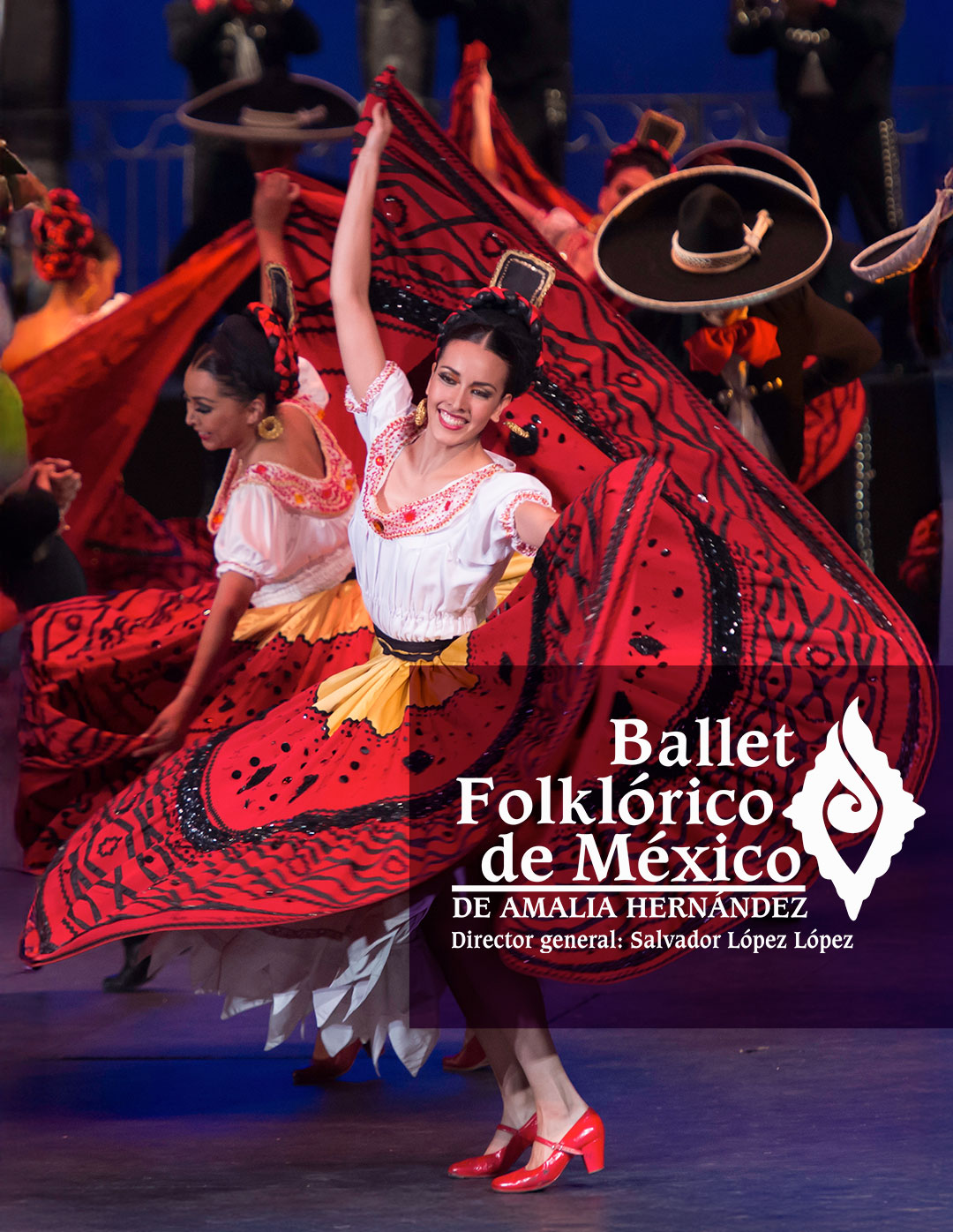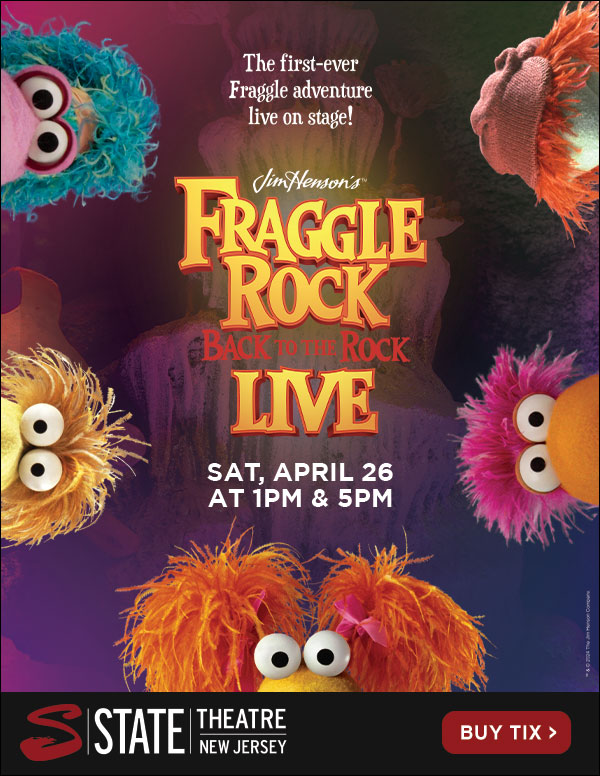
Amalia Hernández Navarro
Norma López Hernández
General Director Salvador López López
Artistic Director Viviana Basanta Hernández
Los Mayas
This ballet has been wrought out of several legends taken from the sacred books of Mayans, the Popol-Vuh, and the Chilam Balam. The main character is X-tabay, the beautiful goddess of hunting, who also seduces and hunts men; Another legend is that one of the Three Princely Brothers disappears mysteriously and thereby incites his other two brothers to take a terrible vengeance on the world, and the legend of Nic-te, a mortal woman whose role is to compel the return of a departed lover.
Sones Antiguos de Michoacán
The first folkloric ballet created by Amalia Hernandez. Michoacan is one of the provinces that disputed the supremacy of Mexican music and popular dance. This brief mosaic begins with the Michoacan version of jarabes, which have their reminiscences of “jota” and “zarabanda,” tell us the unmistakable signs of their miscegenation.
Tarima de Tixtla
Based on the original dances of the Guerrero state, Tarima de Tixtla is one of the most colorful and cheerful choreographies in the Ballet Folklórico de México’s repertoire. The echo of the tapping shoes shakes the wooden stand, representing with joy the warmth of the people from Guerrero. The swirl of the skirts and the tapping of the dancers' feet show an incessant dialogue through dance.
La Revolución
This ballet is dedicated to the "soldaderas", also called Adelitas, women who had a decisive role in the Mexican Revolution, as they took their lives and few belongings to the war scenes. In quick contrast, the aristocrats are seen in a joyous celebration, when a group of rebels break into the party, prepared to fight and march towards their destiny: the Revolution. Charreada One of the most deeply rooted traditions in Mexico is the Charrería, which arises from the equestrian and livestock activities around the country. Declared Intangible Heritage by UNESCO, Charrería is considered an art and discipline where men and women demonstrate their courage with great feats that took place in the old farms of Mexico.
Fiesta en Tlacotalpan
Spanish culture has a strong influence on Jarocha dance and music, which is why there is percussive footwork in every choreography, a distinctive move of flamenco. This fusion can be appreciated during the celebration of the Virgen de la Candelaria, where the streets are filled with mojigangas, fandango dancers, jaraneros and beautiful women who wear the typical Veracruz costume.
La vida es juego
This dance is based on Mexican toys and games. The game is controlled by a very charismatic devil that handles all characters as if they were marionettes and with their cords, he manipulates the way to determine their destiny. Reality and fantasy interact when the devil uses both, “Cupid” and “Death” to perform a tangled love story between a bride, her groom and her lover.
La Danza del Venado
The Deer Dance is an emblematic representation of the state of Sonora and is considered an Intangible Cultural Heritage by UNESCO. The Deer Dance is a ritual performed before the hunting expeditions and reproduces the movements of the prey with amazing fidelity.
Fiesta en Jalisco
The state of Jalisco is the land of the Charros, the Chinas, and the Mariachi, powerful symbols of Mexican identity. Pure Mexican culture is shown in the brilliant folklore of Jalisco, its music, its vigorous and refined dances, and in its dazzling and multicolored costumes.
Amalia Hernández was a dancer and choreographer, founder of the Ballet Folklórico de México in 1952. From a very young age, she began a long journey through Mexican culture that would lead her to rescue the traditional dances around Mexico.
She managed to project to the world the beauty of our country through movement, from pre-Columbian cultures and Spanish influences to the revolutionary times. With her first performances in 1952, she obtained public recognition as a cultural representative of Mexico. Her great success established the Ballet in the Palace of Fine Arts as its permanent venue since October 11, 1959.
With more than 30 million spectators and countless recognitions, Amalia Hernández's artistic legacy remains valid thanks to the more than 120 original choreographies with great technical difficulty, elaborate typical costumes, and first-rate artists, consolidating the Ballet as the best dance company in the world in its genre.
Currently the Company is directed by Amalia ́s grandson, Salvador López López, and her youngest daughter Viviana Basanta Hernández.
FOUNDERS
Amalia Hernández Navarro
Norma López Hernández
GENERAL DIRECTION
Salvador López López
ARTISTIC DIRECTION
Viviana Basanta Hernández
ARTISTIC COORDINATION
José de Jesús Villanueva González, Carlos Antunez Tiburcio,
Víctor Caudillo Alvarado
COMPOSITION AND MUSIC PRODUCTION
Salvador López Maldonado
PUBLIC RELATIONS
Viviana Álvarez Basanta
OPERATIONS MANAGER
Laura Becerril Ortiz
COMMUNICATION COORDINATION
María Fernanda R. Almela
SOCIAL NETWORKS
Rene Dolores Tolentino
GRAPHIC DESIGN
Ricardo Sánchez Flores
WEB PAGE
Alejandro Zayas
ADMINISTRATION
Andrés Vázquez del Arenal, Alejandro Roa Sepúlveda
TECHNICAL COORDINATION
Aldo Misael López Cedillo
AUDIO
Julio Cárdenas, Pablo Flores Martínez, Leonardo Francisco Cano Valadéz, Fernando Jiménez Páramo
WARDROBE
José Barrios Gómez, Pedro Cedillo Jiménez
LIGHTNING
Roberto Arellano
TICKET OFFICE STAFF
Susana Becerril Ortíz, René Jaramillo Fabriz, Diana Elizabeth Gamboa Álvarez



Grant funding has been provided by the Middlesex County Board of County Commissioners through a grant award from the Middlesex County Cultural and Arts Trust Fund. For information on events, go to MiddlesexCountyCulture.com









